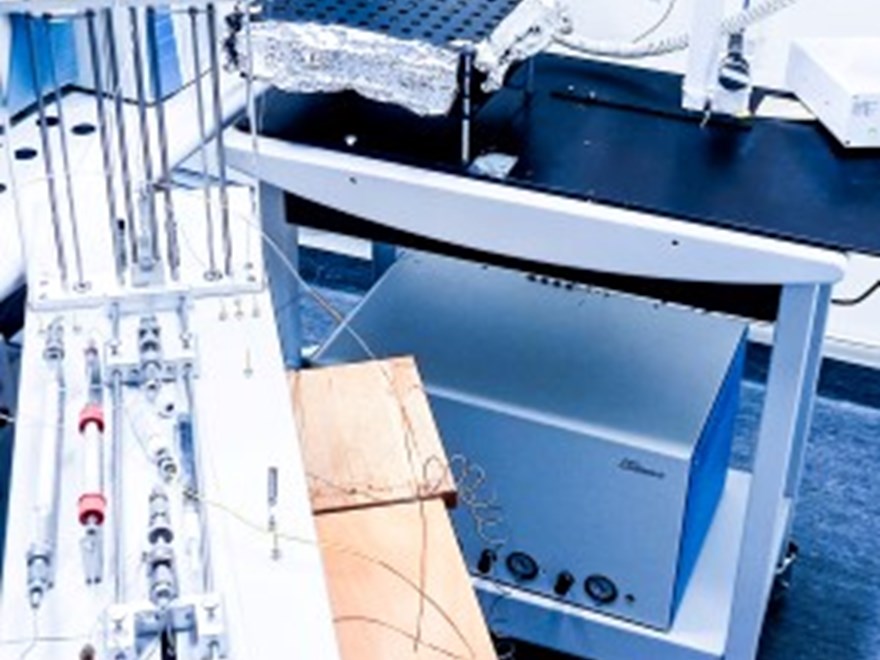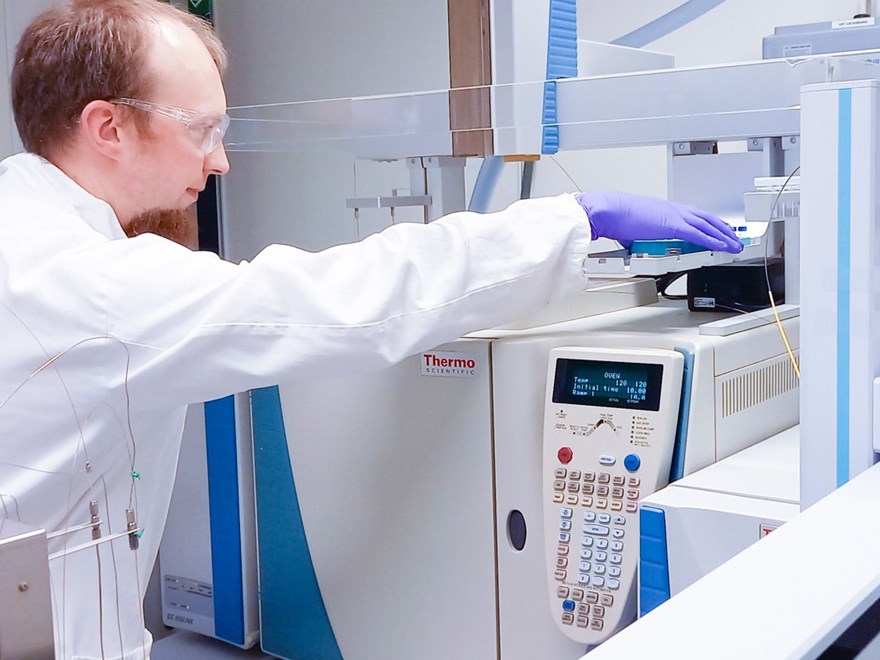Gases
Gases
18O-O2
δ18O-O2 in gas samples is analyzed using a Gas Bench - Isotope Ratio Mass Spectrometer (GB-IRMS). The instrument setup consists of a gas bench (GasBench II) connected to a continuous flow isotope ratio mass spectrometer (DeltaV), both from Thermo Fisher Scientific, Bremen, Germany. The sample is purged from the vial into a helium carrier stream and transferred to the IRMS. The resulting data is corrected for drift and size using oxygen in outdoor air. In each sequence, at least one sample of synthetic air is included and used for quality control.
The accepted standard deviation of oxygen in outdoor air is <0.15‰ for δ18O.
13C-CO2
δ13C-CO2 in gas samples are analyzed on a Gas Bench - Isotope Ratio Mass Spectrometer (GB-IRMS). The instrument setup consists of a gas bench (GasBench II) connected to a continuous flow isotope ratio mass spectrometer (DeltaV), both from Thermo Fisher Scientific, Bremen, Germany. Each sample is injected six times in the instrument. Data from the first injection is discarded and data from the other five injections is averaged and corrected for drift and size before given the final results. Isotopic signatures of the samples are calibrated using two inhouse laboratory carbonate standards, which have been standardised against four certified standards: IAEA-600, USGS 40, IAEA-CH-6, NBS 19. A sample with known isotopic composition is included in every batch as a quality control.
The accepted standard deviation of inhouse laboratory standards is <0.15‰ for δ13C.
13C-CH4
Gas samples are analyzed on a Precon - Gas Bench - Isotope Ratio Mass Spectrometer (Precon-GB-IRMS). The instrument setup consists of a Precon and a gas bench (GasBench II) connected to a continuous flow isotope ratio mass spectrometer (DeltaV), all from Thermo Fisher Scientific, Bremen, Germany. The entire sample volume is purged from the vial through a double-needle sampler into a helium carrier stream and transferred to the IRMS, and resulting data is corrected for blank, drift and size before given the final results. Isotopic signatures of the samples are calibrated using two inhouse laboratory methane standards and a carbon dioxide standard. A sample with known isotopic composition is included in every batch as a quality control.
The accepted standard deviation of inhouse laboratory standards is <0.5‰ for δ13C.


